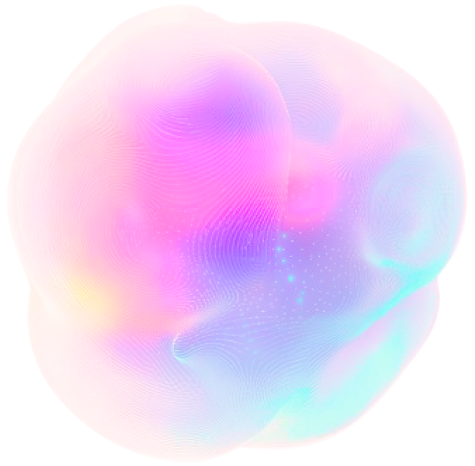AI and Robotics in Healthcare
In an era marked by unprecedented challenges, the integration of AI and robotics in healthcare has become a cornerstone for innovation and improvement in patient care. As the healthcare system grapples with staffing shortages and an increasing demand for personalized medicine, the role of AI and robotics emerges as crucial in shaping a more efficient, accessible, and effective healthcare landscape. This technological leap forward promises to transform the way care is delivered, making significant strides in diagnostics, treatment and patient management.
The COVID-19 pandemic brought to the forefront challenges plaguing our healthcare systems, not least of which is a dire shortage of healthcare workers — a gap the World Health Organization predicts will widen in the coming years. Amid these trials, the potential of AI and robotics in healthcare has emerged as a beacon of hope, drawing attention from doctors, researchers and entrepreneurs eager to harness its capabilities to revolutionize patient care. The surge in interest is underscored by the money being funneled into AI-enabled health startups, marking a pivotal shift towards integrating these technologies into various facets of healthcare.
AI and robotics in healthcare are not just buzzwords but pivotal tools reshaping how medical care is delivered and received. From enhancing body imaging devices to developing innovative oncology platforms, the integration of AI is transforming patient experiences and outcomes across the globe. Precision medicine and therapeutic science are prime examples where AI makes significant strides. By tailoring treatment plans to an individual’s unique genetic makeup, environment, and lifestyle, AI and robotics in healthcare facilitate personalized care that stands to dramatically improve patient recovery and overall health.
AI’s application extends beyond patient care into realms like drug development, where it speeds up the discovery and repurposing of medications — a boon for addressing urgent public health crises. The automation of administrative tasks, a notorious cost sink representing about 30% of healthcare expenditures, also benefits from AI, freeing up valuable resources and time for more critical patient-focused activities. The prowess of machine learning in processing vast amounts of data surpasses human capability, offering an edge in the early detection of diseases. An AI system developed by Johns Hopkins University exemplifies this, outpacing traditional methods in identifying sepsis and substantially reducing mortality rates by 20%.
The intersection of AI and robotics with healthcare is not without its challenges, notably the integration and monetization of these technologies within existing systems. Despite the hurdles, the continued investment in AI health startups signals a robust growth trajectory, with projections estimating the AI healthcare market to reach nearly $150 billion by 2029. This expansion reflects a collective acknowledgment of AI and robotics’ critical role in addressing current and future healthcare challenges, from staffing shortages to the efficient management of diseases.
As the landscape of healthcare continues to evolve, the integration of AI and robotics stands as a testament to the ingenuity and resilience of the medical community. By harnessing these technologies, we are not only mitigating current challenges but also laying the groundwork for a future where healthcare is more accessible, personalized, and effective, marking a new era in the pursuit of wellness and health for all.
AI & Robotics Companies in Healthcare
Alphabet, it has to be said, emerges as a beacon of progress here, as its subsidiaries Google Health and DeepMind are pioneering advancements that are setting new benchmarks in AI and robotics in healthcare. This technological leap is not confined to software alone.
Butterfly Network’s development of portable whole-body imaging technology exemplifies how AI is making sophisticated diagnostics accessible in even the most remote locations.
The impact of AI and robotics in healthcare extends into the operating room, too, where Medtronic’s introduction of the first AI-powered endoscopy device heralds a new era of precision and efficiency in medical imaging.
Merative, a powerhouse of health data analytics owned by IBM, is harnessing the vast potential of healthcare data to drive insights and innovation.
Similarly, pharmaceutical giant Sanofi is leveraging AI through its ownership of Owkin, underscoring the industry’s shift towards data-driven drug development and patient care.
Stryker’s contribution to this transformative era cannot be overstated, with its advanced orthopedic robots enhancing the precision and safety of surgical procedures. This synergy of AI and robotics in healthcare is reshaping the medical landscape, making interventions safer, more efficient, and less invasive.
The realm of medical imaging, too, is witnessing unprecedented advancements thanks to AI and robotics with companies like Aidoc offering AI-based imaging services that support healthcare professionals by providing quicker, more accurate analyses.
Another is Behold.ai, which specializes in enhancing CT scans and X-rays with AI, improving diagnostic accuracy and patient outcomes.
Caption Health’s use of AI to make ultrasound technology more accessible and interpretable is another testament to the transformative power of these technologies.
To add, Gleamer and Sirona are at the forefront of this, developing medical-grade AI tools that revolutionize radiology and imaging interpretation. Their innovations exemplify how AI and robotics in healthcare are not just augmenting existing practices but are paving the way for new methodologies and approaches to care.
Finally, Qure.ai’s AI applications for chest X-rays, head CT scans and more are indicative of how AI and robotics are improving diagnostic accuracy, heralding a future where healthcare is more predictive, personalized, and patient-centric.
Conclusion
The narrative of AI and robotics in healthcare is one of optimism and relentless innovation. The resilience and ingenuity of the medical community, fueled by the capabilities of AI and robotics, are laying the foundation for a future where healthcare is not only more accessible and personalized but also more effective in meeting the diverse needs of populations worldwide. This new era in healthcare, powered by AI and robotics, promises to transform challenges into opportunities, ensuring that patient care continues to evolve, adapt, and thrive in the face of adversity. The journey of integrating AI and robotics in healthcare is just beginning, and it stands as a testament to humanity’s unwavering pursuit of wellness and health for all, marking a pivotal chapter in the story of medical advancement.
In closing, the AI Insider wants to thank its readers for their attention. As this narrative unfolds, it is clear that the story of AI and robotics in healthcare is only beginning, promising to transform challenges into opportunities and ensuring that patient care continues to evolve, adapt and thrive. Here’s to the unwavering pursuit of wellness and health for all, marking a pivotal chapter in the story of medical advancement.
Featured image: behold.ai’s red dot® AI algorithm identifies chest X-rays from COVID-19 patients as ‘abnormal’. Credit: behold.ai






